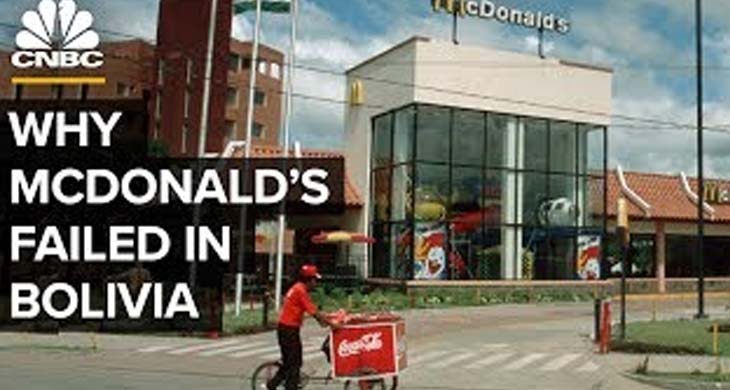Why Did McDonald’s Fail in Bolivia?

The world-renowned fast-food chain, McDonald’s, boasts an impressive global footprint, with over 36,000 locations spread across nearly all continents, Antarctica being the sole exception.1 A considerable chunk of these outlets, over 1,400 in total, are across South America. Yet, Bolivia, a Latin American nation, distinctly stands out in this narrative as a country that effectively resisted the infiltration of McDonald’s classic American fast food products like Big Macs and McNuggets. Consequently, the American fast-food giant had to retract all their franchises following an unfruitful five-year tenure.
Intriguingly, in May 2014, Starbucks and Yum! Brands, two global food and beverage corporations, announced their intent to foray into the Bolivian market. This decision to venture into a market where McDonald’s had previously suffered significant losses, resulting in a complete shutdown of its outlets and subsequent banishment, inevitably aroused curiosity. Market analysts and observers alike are now keenly awaiting to see how these new entrants will strategize to circumvent the obstacles that led to the downfall of all McDonald’s in Bolivia.
McDonald’s in Bolivia: A Struggle and Subsequent Failure
In the case of McDonald’s, its Bolivian venture was anything but successful. After a 5-year operation period, it grappled with mounting resistance from the local populace and the government. By 2002, all its locations in the country were permanently closed.3 This failure was a surprising turn of events, especially given the Bolivian fondness for hamburgers. However, it became evident that Bolivians favoured supporting local street vendors over patronizing multinational fast-food chains.
The debacle over McDonald’s in Bolivia was closely followed by a significant political development there: the election of President Evo Morales in 2006. Known for his strong anti-American sentiments, Morales has been extremely reluctant to allow Western influences in the form of products, brands, or culture into Bolivia. His vehemence against US fast-food chains was publicly expressed at the United Nations, where he denounced their influence as a “threat to humanity.”
Even physical symbols underscore Bolivia’s defiance against Western influence. For instance, the clock on the constitution building in La Paz runs anti-clockwise, a bold statement that the country would not adhere to Western norms. This sentiment, termed the “clock of the south” by Bolivian Foreign Minister David Choquehuanca, reiterates Bolivia’s decision to chart its own unique course, free from Western principles.
Compared to its ally, Venezuela, Bolivia’s resistance to Western influence is quite stark. While Venezuela hosts around 140 McDonald’s outlets, Bolivia remains devoid of the golden arches. Bolivia’s amended its constitution in 2008 to shield the country from foreign interests, bolster local businesses and investments, and guard against industrial agriculture on a large scale.
Bolivia’s disdain for Western products manifested in a proposed ban on Coca-Cola in 2012. This move was symbolically aligned with what the government termed as the “end of capitalism.” The proposed ban was to commence on December 21, 2012, a date coinciding with the end of the Mayan calendar and the associated “end of the world” predictions. However, no ban ever came to be.
A critical aspect of penetrating the Bolivian market appears to be the establishment of a strong local partnership. All McDonald’s in Bolivia, despite its efforts to adapt to local tastes by incorporating elements like llajwa sauce and folkloric music, was unable to win over Bolivian consumers. And after five years, all eight branches in La Paz, Cochabamba, and Santa Cruz closed in 2002.
In addition to Bolivia, McDonald’s has been unable to find footholds n Jamaica, Iceland, and Bermuda.
The narrative of McDonald’s downfall in Bolivia is in a documentary that delves into the reasons behind the Bolivians’ rejection of the world’s most famous burgers. The director, Fernando Martínez, attributes this failure not just to the price point but also to deeper socio-cultural aspects of the Bolivian populace. He posits that Bolivians’ deep-rooted affinity for their traditional dishes and flavors, usually cooked over several hours, has largely kept them committed to their culinary heritage.
Bolivia remains a strong bastion of traditional food, where dishes like salteña empanadas, bread with cheese, fricassee, majadito, or silpancho continue to hold sway over global fast-food offerings. As the documentary underscores, in Bolivia, the indigenous culture scored a resounding victory over a representative of the globalized world.




